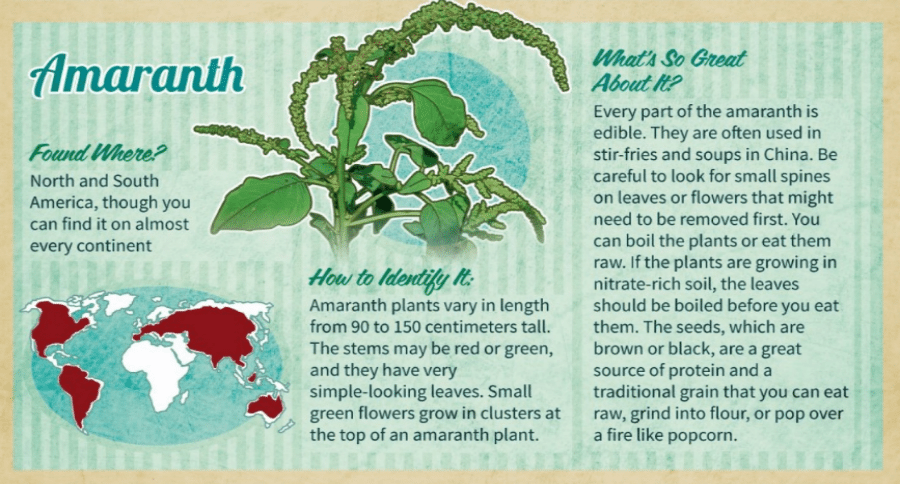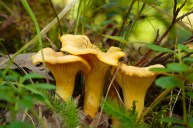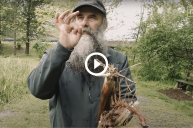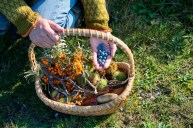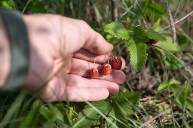This infographic does indeed highlight a few wild edibles, but you'd be foolish to rely on it for identifying and foraging wild plants to eat.
Foraging for wild edibles is a fun and practical pastime. It's a skill that could even save your life should you ever find yourself in a genuine survival situation.
The following infographic does indeed highlight several wonderful wild edibles, and it may just pique your interest in the fulfilling and enriching activity known as foraging. There's value in its stylistic and attractive format. But it would be a mistake to rely on it for anything but the crudest of primers for anything but the most commonly recognizable plants.
So give it a look, marvel at its beauty, enjoy its cool and artful presentation. Then meet me at the end and we'll chat for a moment about real, practical foraging.
It's probably a misnomer to call this "A Survivalist's Guide to Eating in the Wilderness." Chances are, if you're able to find dandelions or asparagus, you're not in a real survival situation nor are you in the wilderness (you're probably just a few paces from a road or civilization). But I may be quibbling about semantics.
Also, if you should ever find yourself in a real life survival situation or even just want to supplement your diet with a few commonly found wild edibles, this infographic is not what you want to be relying on for properly identifying actual plants.
I'd suggest that you find yourself a mentor and/or pick up copies of some good, solid foraging guides. Study them, really learn how to identify the plants you're interested in, and partake of those plants in small doses to begin with, just to see how your system reacts to ingesting them.
A couple of outstanding books on the subject are Sam Thayer's 'The Forager's Harvest' and 'Nature's Garden' (and Thayer's soon-to-be-released third book 'Incredible Wild Edibles'). These are just a couple of the really good guide books available.
I would also take the graphic's "General Tips for Avoiding Poisonous Plants' with a significant grain of salt. Many edible plants display the qualities presented in these tips, which, to its credit it does say at the bottom of the graphic.
Better is the 'Wilderness Dining Etiquette', which has some good tips on avoiding pollutants and leads with the sensible charge of "ONLY eat plants that you can 100% positively identify. Always be certain that what you're eating is safe."
But seriously, enjoy this colorful and artful infographic, and if you should ever be able to amass enough amaranth seeds to "pop over a fire like popcorn," give me a call...that I would like to see.
Like what you see here? You can read more great articles by David Smith at his facebook page, Stumpjack Outdoors.
NEXT: Southern Foraging: What Can You Find to Eat in the Middle of Summer in Texas?
https://rumble.com/embed/u7gve.v3tpld/
